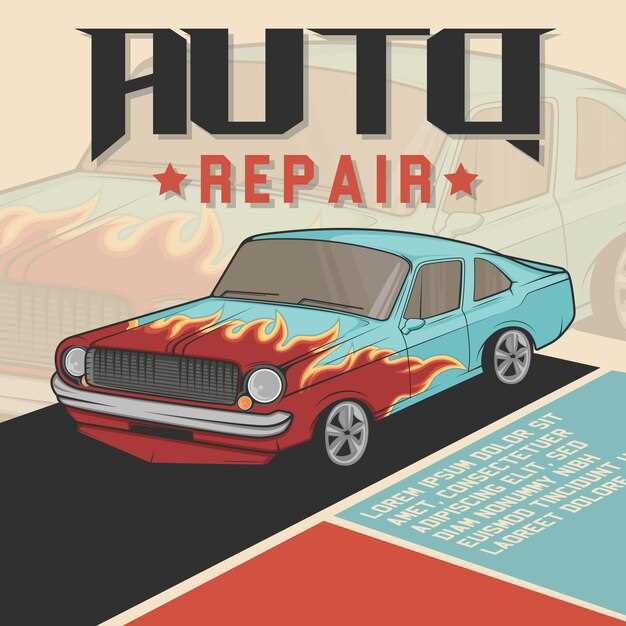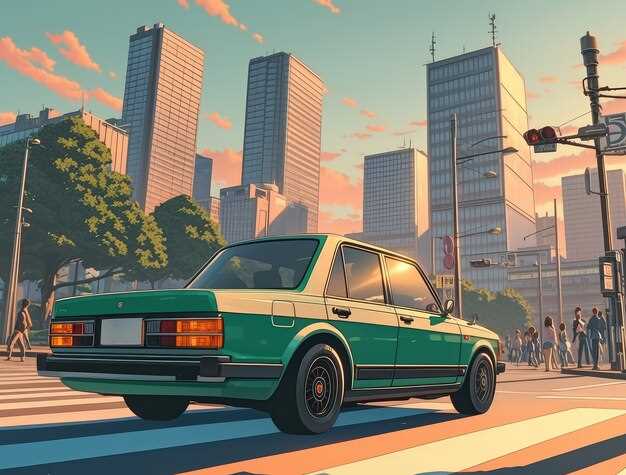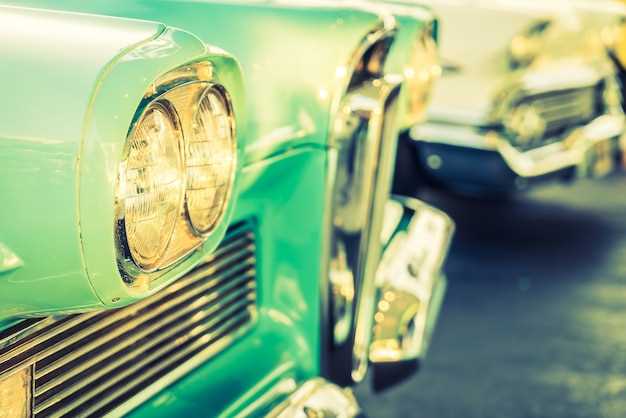
Muscle cars represent not just a category of vehicles, but a significant facet of American culture. Emerging in the 1960s, these high-performance automobiles captured the imagination of a nation that was increasingly defined by speed, power, and rebellion. With their aggressive designs and roaring engines, muscle cars became emblematic of a youthful spirit, resonating deeply with the ethos of freedom and individuality prevalent in American society.
The cars themselves evolved into symbols of status and identity, embodying the aspirations and dreams of a generation. Icons like the Ford Mustang, Chevrolet Camaro, and Dodge Charger have transcended mere transportation; they are embedded in the pop culture fabric through movies, music, and art. Their appearances in popular films such as “Bullitt” and “Vanishing Point” solidified their status as cultural phenomena, further intertwining the allure of speed with the narrative of American life.
As the auto industry has witnessed transformations over the decades, the influence of muscle cars remains irrefutable. They have inspired a rich subculture that values performance, aesthetics, and nostalgia, creating communities centered around the appreciation of these iconic vehicles. The passion for muscle cars continues to thrive, signifying a lasting connection between cars and the evolving landscape of pop culture in America.
The Birth of Muscle Cars in the 1960s
The emergence of muscle cars in the 1960s marked a significant turning point in American automotive history and pop culture. These high-performance vehicles captured the spirit of freedom and rebellion that characterized the era.
- Definition: Muscle cars are typically defined as affordable, compact cars equipped with powerful engines. They combine speed and style, appealing to a generation seeking excitement and individuality.
- Key Models: Iconic models such as the Ford Mustang, Chevrolet Camaro, and Pontiac GTO set the foundation for the muscle car movement. These cars not only offered performance but also became symbols of youth culture in the USA.
- Performance and Power: The introduction of V8 engines and enhanced performance features allowed these cars to dominate the streets. They provided an exhilarating driving experience, which was celebrated in movies, music, and advertising.
This period saw the rise of the “muscle car culture,” where car enthusiasts gathered to showcase their vehicles, participate in races, and customize their rides. The influence of this culture can be seen in various aspects of American life:
- Movies: Films like “Bullitt” and “American Graffiti” featured muscle cars prominently, elevating their status in popular culture.
- Music: The sounds of rock and roll perfectly complemented the roar of muscle car engines, creating an undeniable connection between the two.
- Social Identity: Muscle cars became a means of self-expression, representing youth, rebellion, and the American Dream.
As the 1960s progressed, the popularity of muscle cars only intensified, leading to an unforgettable legacy in the automotive industry and shaping cultural narratives for decades to come. Their impact continues to resonate, symbolizing a unique era of freedom and unrestrained power on the roads of America.
Iconic Movies Featuring Muscle Cars

Muscle cars have played a significant role in shaping American pop culture, particularly through cinema. Several films have not only showcased these powerful vehicles but also contributed to their legendary status in the USA. The following is a selection of iconic movies that feature muscle cars prominently, highlighting their impact on culture and automotive enthusiasts alike.
| Movie Title | Release Year | Featured Muscle Car | Significance |
|---|---|---|---|
| American Graffiti | 1973 | 1963 Chevy Impala | Celebrated the car culture of the early ’60s, showcasing street racing and social interactions among youth. |
| Bullitt | 1968 | 1968 Ford Mustang GT390 | Known for its legendary car chase scene, it elevated the Mustang’s status and solidified its place in pop culture. |
| The Fast and the Furious | 2001 | 1995 Mitsubishi Eclipse | Though centered around import cars, this film rejuvenated interest in all types of performance vehicles, including muscle cars. |
| Vanishing Point | 1971 | 1970 Dodge Challenger | Reinforced the allure of the muscle car as a symbol of freedom and rebellion on the open road. |
| Gone in 60 Seconds | 2000 | 1971 Ford Mustang Mach 1 | Highlighted the importance of classic muscle in car heists, showcasing the chase and craftsmanship behind such vehicles. |
These films not only feature muscle cars but also reflect the values and attitudes of the times in which they were produced. Muscle cars have become eternal symbols of American performance, style, and culture, influencing generations of car enthusiasts and filmmakers alike.
Muscle Cars and Their Influence on Music Genres

Muscle cars have made a significant mark on various music genres, reflecting the vibrant culture of the USA. Their powerful engines and aggressive designs symbolize freedom and rebellion, themes often celebrated in songs across rock, hip-hop, and country music.
In the realm of rock music, iconic bands like The Beach Boys and Steppenwolf have immortalized the thrill of driving muscle cars in their lyrics. Songs like “Little Deuce Coupe” and “Born to Be Wild” encapsulate the allure of speed and adventure, inspiring a generation to embrace the open road and the car culture that accompanies it.
Hip-hop artists have also drawn from the imagery of muscle cars, using them as symbols of success and status. Prominent figures like Dr. Dre and Jay-Z frequently reference classic American cars in their tracks, celebrating the lifestyle and aspirations that come with owning such powerful vehicles. This connection has fostered a unique bond between car enthusiasts and music fans, shaping not only the music itself but also the culture surrounding it.
Country music, too, reflects the muscle car phenomenon. Many artists weave stories of love, heartbreak, and nostalgia around the backdrop of cruising in classic cars. Tracks often depict road trips and small-town life, with muscle cars serving as vessels for personal experiences and collective memories in American culture.
Overall, muscle cars have transcended their mechanical purpose, becoming symbols of identity and aspiration within various music genres. Their influence continues to inspire artists, shaping the narrative of America’s pop culture and solidifying their place as cultural icons. As long as music resonates with themes of freedom and the open road, the legacy of muscle cars will endure in the soundtrack of American life.
How Muscle Cars Shaped Automotive Design Trends
Muscle cars emerged in the USA during the 1960s, representing a unique blend of powerful performance and bold styling. These vehicles prioritized speed and strength, leading to a significant shift in automotive design trends that can still be observed today. The essence of muscle cars influenced manufacturers to focus on aggressive lines, wide stances, and distinctive grilles, setting a new standard for what sporty cars should look like.
One of the most recognizable features of muscle cars is their elongated hoods and compact rear ends. This design not only showcased the powerful engines housed within but also enhanced aerodynamics, contributing to improved performance on the road. The influence of muscle cars encouraged other segments of the auto industry to adopt similar aesthetic principles, integrating elements that prioritized both form and function.
Furthermore, the increase in horsepower and performance standards established by muscle cars pushed automotive engineers to innovate. Cars began to feature better suspension systems, disk brakes, and advanced engine technologies, which have since become staples in various car categories. This pursuit of speed and handling continued to reshape the overall design philosophy across the automotive landscape.
The cultural significance of muscle cars also led to collaborations between designers and artists, merging automotive technology with elements of pop culture. Customization became a key aspect of muscle car ownership, with owners modifying their vehicles to reflect personal styles, thus encouraging a trend towards individuality in car design. Such movements paved the way for a diverse range of vehicles that catered to various tastes and preferences.
Overall, muscle cars not only revolutionized performance standards but also left an indelible mark on automotive design trends. Their legacy continues to inspire car manufacturers globally, reinforcing the significant role these iconic vehicles play in the culture of cars and the broader automotive industry.
The Role of Muscle Cars in Social Movements
Muscle cars have not only influenced American automotive culture but also played a significant role in various social movements throughout the decades. The powerful image of these vehicles became intertwined with the spirit of rebellion, freedom, and resistance, resonating deeply with the sentiments of the people.
During the late 1960s and early 1970s, muscle cars symbolized a shift towards individuality and expression. They provided a means for youth to assert their identity amidst the social changes taking place in the USA.
- Counterculture Movement: Muscle cars became icons of the counterculture, synonymous with the youth’s defiance against the establishment. They represented a desire for freedom and escape, becoming a transportation method for protests and gatherings.
- Civil Rights Movement: In the pursuit of equality, muscle cars symbolized mobility and liberation. They were often used in rallies, enabling activists to travel to important events and spread their message across states.
- Environmental Activism: As the muscle car era coincided with rising environmental concerns, the conversation shifted. The push for fuel efficiency and sustainability emerged in response, leading to a transformation in the automotive industry and influencing culture.
Additionally, the incorporation of muscle cars in film and music during the 1970s amplified their cultural significance. Movies like “Bullitt” and “American Graffiti” showcased these cars as not just vehicles, but as symbols of freedom and rebellion on screen, further embedding them into the American psyche.
In conclusion, muscle cars have transcended their mere function as vehicles. They embody a spirit of resistance and an enduring symbol of the evolving American culture. Their role in social movements showcases how cars can contribute to significant cultural shifts, reflecting the aspirations and struggles of generations.
Modern Muscle Cars: Legacy and Cultural Relevance Today
Modern muscle cars continue to embody the spirit of American automotive innovation, merging performance with iconic styling. Models such as the Ford Mustang, Chevrolet Camaro, and Dodge Charger have evolved significantly while preserving their roots, keeping the passion for high-performance vehicles alive in the USA. These cars are not just machines; they represent a unique aspect of American culture, symbolizing freedom, rebellion, and individuality.
The resurgence of muscle cars in the 21st century can be traced back to a renewed interest in retro designs and powerful engines, appealing to both enthusiasts and a new generation of drivers. Manufacturers have embraced modern technology, incorporating advancements in performance, safety, and fuel efficiency while still delivering the exhilarating driving experience that muscle cars are known for. This combination of classic appeal and modern engineering keeps these vehicles relevant in today’s automotive market.
Muscle cars also hold a significant place in popular media, influencing films, music, and fashion. They have been prominently featured in movies like “Bullitt” and “The Fast and the Furious” series, contributing to their legendary status. The roar of a V8 engine, sleek lines, and vibrant colors resonate with audiences, reinforcing their allure in American culture.
Moreover, the community surrounding muscle cars thrives through car shows, clubs, and online forums, fostering a sense of belonging among enthusiasts. This camaraderie strengthens the cultural significance of these vehicles, as they serve as a bridge between generations, uniting car lovers who appreciate both the history and the modernity of muscle cars.
In summary, modern muscle cars are a testament to the resilience of a rich automotive heritage, continuously shaping and reflecting USA culture. Their legacy endures through passionate enthusiasts, technological advancements, and their prominent role in popular culture, ensuring that the roar of a muscle car will always echo through American roads.



